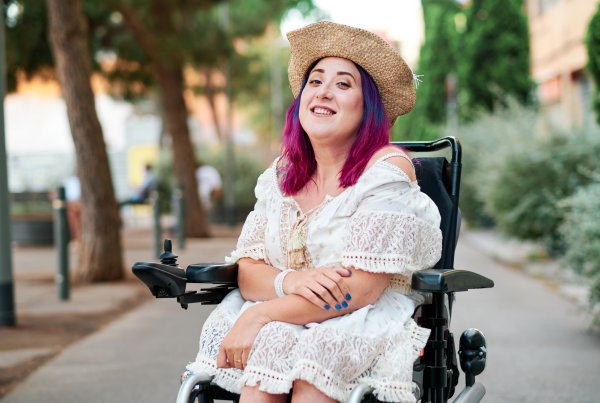Disability services have progressed significantly since the days of institutionalised care.
Since the early 80’s, we have been lucky as a nation to witness many positive changes and innovative programs emerge. One of these innovations was the introduction of family-based care for children and adults with a disability. Family-based care saw people with a disability, who could not remain in the care of their loved ones, reside in the homes of foster or host families instead. This provided a creative housing solution in which people with a disability thrived in a loving, supported environment. Not only was this model hugely successful in providing people with a disability an alternative to residential and institutional care, but it provided the government with a financially viable solution to what would have been a rather expensive problem.
The introduction of the NDIS has seen many state-funded programs dissolve and with this comes uncertain times for families who fall under the foster/host care umbrella. One of the very successful Victorian Programs – Family Options, was forced to close its doors this year after 20 years of supporting vulnerable children and adults in the family-based care system. With this closure came a commitment from the state government to continue to pay a tax free reimbursement to most Family Options caregivers for the support they provide, until June 2019 – after which time no-one can be certain as to the fate of people with a disability in Family Options placements and whether caregivers will be expected to continue the caring role unfunded and unsupported. For many who provided host care outside of the Family Options program, these payments have already ceased. So instead of being assisted to keep people with a disability in supportive placements, families are now being forced to put the people they care for into group homes. The lingering question on the minds of many families is why innovative housing solutions similar to Family Options can’t be replicated under the NDIS.
The idea of a Family Options type program, although innovative, isn’t unique.
In fact, similar programs have been run successfully around the world for many years. In the UK for example, they run the highly successful HomeShare and Shared Lives programs where a carer opens up their home to include a young person or adult who needs extra support to live well. New Zealand has taken the innovation a step further with their Funded Family Care model, whereby in special circumstances, parents and carers can receive a wage for providing care to a family member who has complex disability needs.
The benefits of both programs are significant. From the perspective of the person with a disability, they are supported by someone they know; who understand and can support their complex needs in an environment that is familiar and secure. They can reside within the community in an inclusive setting as opposed to a segregated model. The caregivers are supported financially to meet the needs of the person in their care. This reduces the need for families to rely on unemployment benefits. It provides families with an income which in turn promotes self-worth and self-confidence. Many carers who have supported a loved one their whole life, have had to forgo a career, have little to no superannuation and have low self-worth, perpetuated by their treatment from the government and their community.
The benefits to the government and the greater community of innovative housing options are a no-brainer.
Paying carers and families to keep people with a disability in secure, familiar housing where their needs can be met, saves money. Paying a carer is significantly cheaper than funding a place in group housing. Paying a carer gets people off unemployment benefits. A wage earner becomes a taxpayer. Taxes support our economy. People with jobs have a sense of purpose and therefore are more likely to have improved self-esteem, so may be less reliant on healthcare services (again saving the government money).
The arrival of the NDIS and its capacity to be used creatively provides a great opportunity for ideas like the Host Family and Funded Family Model to fill the housing gap. With housing affordability in Australia at an all-time low and disability housing options remaining scarce, it is time for the government to embrace alternative living options. Even with the implementation of the NDIS, we are years away from having enough suitable accommodation to meet the growing need. The NDIS is a program that should be being celebrated as a milestone in disability history for the opportunities it can and will bring to people with a disability to live a life of choice and control. Suitable, affordable housing is just one area that is currently causing people on the NDIS great concern, however, this does not need to be the case. There is flexibility within the scheme to create meaningful outcomes for participants, families and the wider community whilst remaining cost effective.
There are many innovative ways to use NDIS funding to provide ‘out-of-the-box’ housing solutions, including short-term accommodation. We will be discussing some of our favourites in upcoming blog articles but in the meantime, we would love to hear your ideas on how you use your NDIS funds to provide innovative solutions, especially for housing and short-term accommodation.
Want to learn more about Support Coordination?
Find out more about how we can work together with you so you can live your best life!





Brilliant solutions Amber, Australia should be looking more at the precedents that are not having all the problems the State and Federal Governments are having now and into the future. These problems are being manifest across the broad spectrum of service provision, housing, carers/workers and the social dislocation that a ‘business model’ is creating. Your ideas could address all these issues, I hope they are listening and start getting creative and innovative !
Really well researched, NZ Family Funded Care model is well worth looking at, well done Kiwis !
Great work Amber, we all need to get behind this and make it happen here. Where do we sign? How can we (the carers supporting a loved one at home) help?
To add to this I would also suggest that those homes also need adequate modifications to be made to the house/homes to fit all the equipment, consumables and supplies that are required by some families such as ours. (We have so much equipment, consumables and supplies that we have to store it all in our bedroom and hallway and sleep on the floor and couch in the lounge room and there are trip hazard in every room because he is attached to life support equipment with tubes and leads everywhere and we have not enough power points to power all the equipment so have piggy backed plug outlets in every room).
So Structural modifications, electrical and engineering need to be implemented on top of the usual instillation of ceiling hoists and wheelchair ramps, we also need help with bathroom modifications, widened door frames, internal and external storage space etc, current property sizes do not allow for this do be achieved in most places and the few like ours that exist have to be funded by the un payed/unemployed carers (which is impossible with no money)